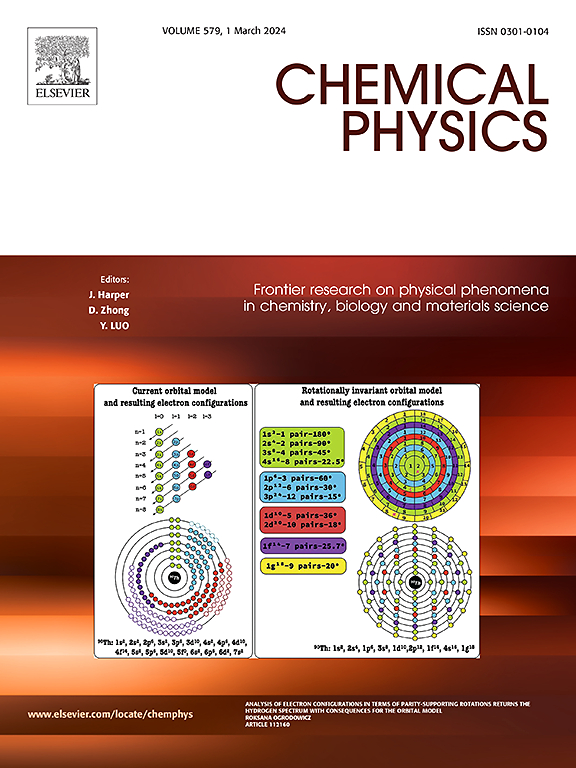利用官能团将新型 PAM 结构开发为 HT/HP 条件下的高性能粘土抑制剂的研究
IF 2
3区 化学
Q4 CHEMISTRY, PHYSICAL
引用次数: 0
摘要
聚丙烯酰胺(PAM)分子结构在较高温度下不稳定,限制了其在水基钻井液(WBDF)应用中的有效性。本研究的重点是确定可提高 PAM 结构热稳定性的官能团。它对低分子量和高分子量(MW)PAM 基聚合物在高温高压(HT/HP)条件下的膨胀抑制能力进行了全面的比较分析。在分析粘土矿物表面特性的同时,还研究了改性 PAM 与粘土(Na-MMT)表面相互作用并吸附的机制。因此,分子动力学(MD)模拟结果表明,与传统 PAM 相比,含有乙基和苄基的高分子量新型 PAM 聚合物在 HT 条件下表现出更高的稳定性和更受控制的变形行为。在聚合物与 Na-MMT 的相互作用中观察到了表面改性和疏水效应。低 MW PAM 基聚合物的 d 间距波动较大,表明存在各种或更多的破坏性相互作用。相比之下,插入高 MW PAM 基聚合物后,d-间距波动范围明显更窄、更小。与低 MW PAM 基聚合物和标准 PAM 相比,新型 PAM 表现出更优越的性能,可提供更低的 d 距波动。在 300 至 600°K 的温度范围内,与标准 PAM 相比,新型 PAM 始终能改善 Na-MMT 表面的聚合物吸附性。这表明改性有效地减少了 Na-MMT 颗粒与水分子之间的相互作用,同时增强了聚合物与 Na-MMT 之间的相互作用,从而有可能在 HT/HP 环境中形成更稳定的结构。稳定性的增强表明,Novel PAM 更适用于 WBDF 应用,因为它不易发生结构变化,并能在苛刻条件下保持其完整性。改性使聚合物具有更好的弹性,从而有可能提高实际应用中的性能。本文章由计算机程序翻译,如有差异,请以英文原文为准。
Investigation on the development of Novel PAM structure as high-performance clay inhibitor in HT/HP conditions by using functional groups
Polyacrylamide (PAM) molecular structures are not stable at higher temperatures, limiting their effectiveness in water-based drilling fluid (WBDF) applications. This study focuses on identifying functional groups that can enhance the thermal stability of PAM structure. It presents a comprehensive and comparative analysis of the swelling inhibition capacity of both low and high molecular weight (MW) PAM-based polymers at high temperature and high pressure (HT/HP). The mechanism by which modified PAM interacts with and adsorbs to the clay (Na-MMT) surface is examined, along with an analysis of the surface properties of the clay minerals. Therefore, molecular dynamic (MD) simulation results revealed that the Novel PAM polymers with high MW containing ethyl and benzyl groups demonstrate greater stability and more controlled deformation behavior compared to conventional PAM at HT conditions. Surface modification and hydrophobic effects were observed in the interactions between polymers and Na-MMT. Low MW PAM-based polymers showed larger fluctuations in d-spacing, indicating various or more disruptive interactions. In contrast, the insertion of high MW PAM-based polymer resulted in significantly narrower and lower d-spacing fluctuation ranges. The Novel PAM exhibited superior performance, providing lower d-spacing fluctuations compared to both low MW PAM-based polymers and standard PAM. Across a temperature range from 300 to 600°K, the Novel PAM consistently improved polymer adsorption on the Na-MMT surface compared to standard PAM. Indicating that the modifications effectively reduce the interaction between Na-MMT particles and water molecules while enhancing the interaction between the polymer and Na-MMT, potentially leading to more stable structures in HT/HP environments. The enhanced stability suggests that Novel PAM is more suitable for WBDF applications, as it is less prone to structural changes and can maintain its integrity under harsh conditions. The modifications provide the polymer with better resilience, potentially leading to improved performance in practical applications.
求助全文
通过发布文献求助,成功后即可免费获取论文全文。
去求助
来源期刊

Chemical Physics
化学-物理:原子、分子和化学物理
CiteScore
4.60
自引率
4.30%
发文量
278
审稿时长
39 days
期刊介绍:
Chemical Physics publishes experimental and theoretical papers on all aspects of chemical physics. In this journal, experiments are related to theory, and in turn theoretical papers are related to present or future experiments. Subjects covered include: spectroscopy and molecular structure, interacting systems, relaxation phenomena, biological systems, materials, fundamental problems in molecular reactivity, molecular quantum theory and statistical mechanics. Computational chemistry studies of routine character are not appropriate for this journal.
 求助内容:
求助内容: 应助结果提醒方式:
应助结果提醒方式:


